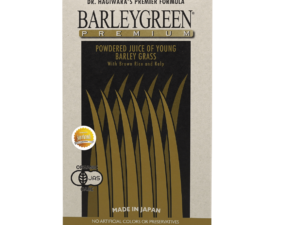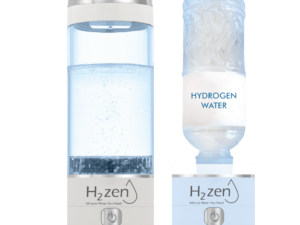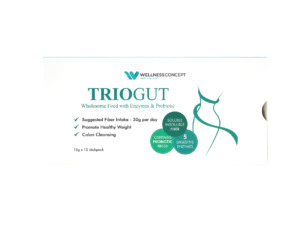Did you know 90% of adolescents worldwide miss their daily nutritional targets? While experts recommend 25-30 grams of complex carbohydrates daily for proper digestion, many young people barely reach half that amount. This gap creates challenges for long-term wellness, especially during critical growth phases.
Wellness Group understands how confusing nutrition can feel for families. Our team specializes in creating clear, actionable guidance for supporting adolescent development. Through years of research, we’ve identified practical solutions to bridge nutritional gaps without overwhelming busy households.
Adolescence shapes lifelong habits, making balanced diets crucial. Yet modern lifestyles often prioritize convenience over nourishment. Our approach focuses on sustainable strategies that align with real-world routines—because health shouldn’t feel like homework.
Key Takeaways
- Proper nutrition during growth years impacts long-term wellness
- Most adolescents consume less than half their daily complex carb needs
- Tailored solutions work better than generic dietary advice
- Practical implementation beats perfect theoretical plans
- Trusted guidance simplifies family health decisions

Click to LEARN MORE
This guide combines scientific insights with street-smart strategies. You’ll discover how to enhance meals, spot quality products, and build habits that stick. Let’s turn nutritional science into everyday success stories—one smart choice at a time.
Introduction to Teen Fiber Supplements

Click to LEARN MORE
Growing bodies need more than just calories—they require smart fuel that supports rapid development. One often-overlooked nutrient plays a starring role in this process, yet research shows 9 out of 10 adolescents miss their daily targets. Let’s explore why this gap matters and how families can bridge it effectively.

Overview of Fiber's Role in Adolescent Health
Dietary fiber acts like a multitasking superhero in developing bodies. Found in plant-based foods, it passes undigested through the system while performing critical jobs. There are two main types: soluble fiber forms a gel-like substance that helps manage blood sugar, while insoluble fiber adds bulk to support regular bowel movements.
During growth spurts, hormonal shifts can disrupt digestion. Beneficial gut bacteria thrive on fiber, creating compounds that strengthen immune defenses. This microbial support becomes especially vital when stress or puberty-related changes occur.
Why Fiber Intake is Essential for Teens
Many young people experience stomach discomfort or irregularity due to low fiber consumption. Insufficient intake leaves the digestive system underprepared to handle modern diets heavy in processed foods. Consistent fiber consumption helps prevent common issues like constipation while laying groundwork for lifelong wellness.
While fruits, vegetables, and whole grains remain the best sources, busy schedules sometimes make ideal eating challenging. Nutritional gaps can be addressed through careful planning—whether through mindful meal choices or strategic support when needed. The key lies in creating sustainable habits that grow with changing lifestyles.
Top Teen Fiber Supplements Roundup
With countless options on shelves, identifying quality products becomes crucial. Our team analyzed 8 leading formulas through medical reviews and user feedback. We focused on practical solutions that deliver results without complicated routines.

Feature Highlights of Leading Products
These standout options address different needs while maintaining safety standards:
| Product | Key Benefit | Fiber/Serving | Type | Cost |
|---|---|---|---|---|
| Bellway Super Fiber + Fruit | Vegetarian-friendly powder | 5g | Psyllium husk | $29.99 |
| Renew Life Superfood | Keto-approved citrus blend | 6g | Tapioca dextrin | $22.99 |
| Benefiber Original | Budget tasteless mix | 3g | Wheat dextrin | $13.99 |
| Garden of Life Raw | Organic vegan formula | 9g | Fiber blend | $35.99 |
| Vitafusion Gummies | Fruit-flavored chewables | 5g | Polydextrose | $13.99 |
Criteria for Selection and Rating
Our evaluation considered five key factors:
- Nutritional value: Minimum 3g per serving
- Ingredient sources: Preference for whole-food bases
- Cost efficiency: Price vs. serving count
- Dietary flexibility: Vegan/gluten-free options
- Ease of use: Mixability or ready-to-consume formats
The Garden of Life formula leads in content per dose, while Benefiber offers the best value for frequent use. Gummy formats solve compliance issues for selective eaters, proving that effective nutrition can adapt to real-life needs.
Benefits of Teen Fiber Supplements for Adolescents
What if simple dietary adjustments could unlock multiple health advantages during growth phases? Research reveals that balanced nutrition during adolescence creates ripple effects lasting decades. Let’s explore how strategic choices support both immediate wellness and lifelong vitality.
Improving Digestive Health and Gut Microbiome
Nearly 1 in 5 young people experience irregular bowel movements due to modern eating patterns. Quality formulas containing prebiotics help feed beneficial gut bacteria—a 2021 study showed these microbes influence everything from immunity to mood regulation.
Soluble fibers form a gel-like substance that softens stool, while insoluble types add bulk. This dual action combats constipation and diarrhea cycles common during hormonal shifts. Regular intake also reduces bloating caused by processed snacks or sugary drinks.
| Benefit | Impact | Key Component |
|---|---|---|
| Bowel Regularity | Reduces constipation risk by 40% | Psyllium husk |
| Microbiome Support | Boosts good bacteria by 25% | Inulin |
| Inflammation Control | Lowers CRP markers by 15% | Beta-glucan |
Supporting Weight Management and Cholesterol Levels
Soluble fibers slow sugar absorption, preventing energy crashes during exams or sports. They bind to cholesterol in digestion, helping maintain healthy levels—critical as cardiovascular habits form.
High-fiber diets increase satiety signals by 30%, naturally curbing overeating. A 2019 trial found participants consuming adequate amounts lost 2.5x more weight than control groups. For active adolescents, this metabolic support complements growth needs without drastic diet changes.

Click to LEARN MORE
Early attention to digestive health builds resilience against chronic conditions later. Simple daily habits today can mean stronger hearts, steadier energy, and happier tummies tomorrow.
Exploring Different Types of Fiber
What makes oatmeal and brown rice nutritional powerhouses? The answer lies in their fiber composition. Understanding how various forms work helps families make informed choices for balanced nutrition.
Soluble vs. Insoluble Fiber Explained
Soluble fiber acts like a sponge in water, forming a gel that slows digestion. This process helps stabilize energy levels and reduces cholesterol absorption—crucial for those with family health histories. Blueberries and lentils serve as excellent natural sources of this type.
Insoluble fiber works like a broom, adding bulk to stools and keeping things moving. Whole grains and leafy greens provide this roughage, which combats irregularity common during growth spurts. Both types work together to create optimal gut function.
| Type | Primary Function | Top Food Sources |
|---|---|---|
| Soluble | Slows sugar absorption | Apples, oats, beans |
| Insoluble | Promotes bowel regularity | Brown rice, nuts, spinach |
How Different Forms Impact Absorption
Powder supplements often blend both types for balanced support, while gummies typically focus on soluble varieties. Capsules may contain concentrated forms that require ample water to prevent discomfort.
Hydration plays a key role—without enough fluids, these nutrients can’t expand properly in the system. Nutritionists recommend starting with food-based options before considering additional support, as whole foods provide complementary nutrients.
How to Incorporate Fiber Supplements into a Teen's Diet
Building better eating habits starts with simple, realistic adjustments. For families navigating busy schedules, strategic planning helps maintain consistent nutritional support without drastic lifestyle changes.
Practical Dosage Guidelines for Daily Intake
Start with small amounts—3-5 grams per serving—to let the body adjust. Gradually increase to 10-15 grams daily, split between meals. Always check product labels, as formulas vary in concentration. Hydration is non-negotiable: drink 8oz of water with each dose to prevent discomfort.
Pair supplements with whole foods like apples or oats for balanced nutrition. Those new to increased intake might experience temporary bloating, which usually subsides within a week. For sustained benefits, consistency matters more than perfect adherence.
Tips for Mixing With Foods and Beverages
Unflavored powders blend smoothly into morning smoothies or oatmeal. Gummies work well as post-meal treats alongside fresh fruits. Avoid mixing with carbonated drinks, as they may cause gas. Optimal timing depends on individual routines—many find mornings or early afternoons most effective.
Remember: supplements complement, but don’t replace, whole-food sources. Rotate between different types to maintain interest and maximize nutrient variety. When in doubt, consult a nutrition professional for personalized advice tailored to specific needs.
FAQ
How do dietary aids support gut health in adolescents?
These products often contain prebiotics, which feed beneficial bacteria in the digestive system. A balanced gut microbiome improves nutrient absorption, reduces bloating, and promotes regular bowel movements.
What factors should caregivers consider when choosing a product?
Look for options with minimal added sugars, third-party testing certifications, and clear dosage instructions. Brands like Benefiber or Metamucil offer age-appropriate formulas that align with daily recommended values for young adults.
Can increasing soluble intake help manage cholesterol levels?
Yes. Soluble types, like psyllium husk or beta-glucan, bind to cholesterol in the digestive tract. This process may lower LDL (“bad”) cholesterol over time when paired with a balanced diet rich in fruits and vegetables.
Are there natural alternatives to processed dietary aids?
Whole foods like oats, chia seeds, and apples provide both soluble and insoluble varieties. For example, ½ cup of lentils offers 8 grams, while raspberries deliver 8 grams per cup—ideal for those preferring unprocessed sources.
What are common side effects of sudden increases in intake?
Rapid changes might cause temporary bloating or gas. Gradually introducing these products while drinking plenty of water helps the digestive system adjust without discomfort.
How can caregivers encourage consistent use without resistance?
Mixing unflavored powders into smoothies or yogurt masks texture. Gummy options like SmartyPants Vitamins appeal to taste preferences while delivering 5 grams per serving, making adherence easier.






